Why do people want to conquer Everest
Over the past 14 days, during the ascent of Mount Everest, the highest peak in the world, 11 people died from overloads and altitude sickness. Why is this happening and what makes people who have hundreds stand in queues in the death zone, climbing thousands of meters up.
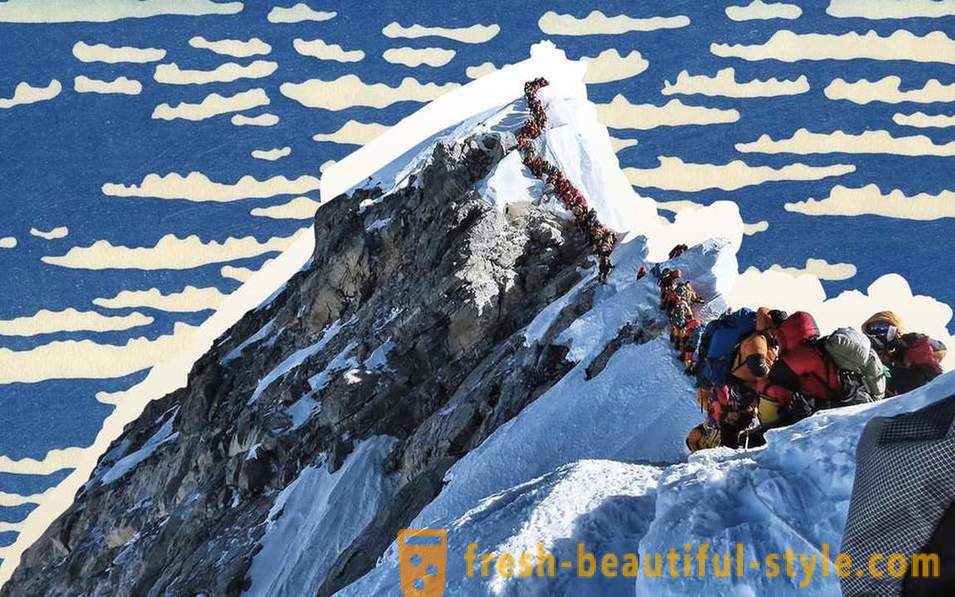
In May, during the ascent of Mount Everest, and the descent from the top of the mountain, as of May 28, killing 11 people. Among them - the climbers from India, Ireland, Nepal, Austria, the USA and the UK. Some died a few minutes after the conquest of heights - a result of exhaustion and altitude sickness.
People within 12 hours of standing in long queues to climb, and it's all in the so-called death zone - at an altitude of over 8,000 meters. Long presence on this site even if sufficient quantities of oxygen can result in fatal consequences. Why do people continue to stand, despite the danger? What was the main cause of the tragedy? Was it possible to avoid such a large number of victims? We have tried to answer these questions.

7 facts about climbing Mount Everest
- There are two classic route to the summit of Everest: the north, which begins in Tibet and south - from Nepal. In total about 17 routes, but for commercial mountaineering considered suitable only two listed. Nine dead climbers climbed Mount Everest on the south side of the Nepal side, two more - on the Tibetan side.
- The climbing is such a term as "weather window" - a time when good weather is set before the impending monsoons and climbing a mountain, in principle, it is possible. Everest "weather window" happens twice a year - in mid-May and in November. Therefore wrong to link the tragic death of bad weather - Esquire interviewed experts argue that the weather was normal, otherwise no one would have left on the climb.
- Total Everest ascent was committed 9159. Among the first rose - 5294 people, the rest - repeated (data Himalayan database to December 2018).
- The Nepalese side is more popular: for all time from the south to the summit up 5888 times, with the Tibetan side of 3271 recorded ascent.
- During the expeditions to Everest killed 308 people. Leading causes of death - avalanche, falls and injuries as a result of the fall, altitude sickness, frostbite, sun exposure and other health problems caused by the peculiarities of finding at this altitude. Not all the bodies of the victims were found.
- on the climbing permit costs $ 11 thousand in Nepal. The state does not regulate the number of people wishing to climb. a record number of permits were issued this year - 381. China limits the number of permits issued - 300 per year.
- From the Russian expedition to Everest 15 people traveled in 2019, last - 25. The average cost of the trip for one person from Moscow - $ 50-70 thousand, taking into account all the necessary equipment.
Everest Routes
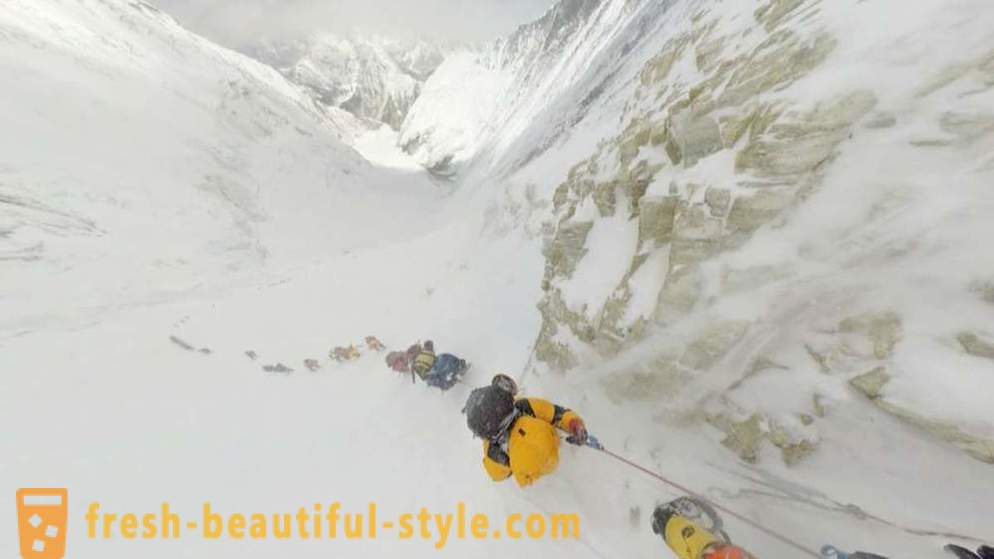
May 23-24, with the Tibetan side of Mount Everest successfully climbed a group of tourists from Russia, headed by the famous Russian climber Alexander Abramov, for whom this was the tenth edition of the ascent (total, he participated in 17 expeditions). Abramov also known as the first Russian, twice Run the program "Seven Summits" - climbing the highest peaks of the six parts of the world.
As Esquire Abramov told the Tibetan side of the less popular because the ascent of this route is more expensive. "The Nepalese side is cheaper, poorly controlled, resulting in people going to poorly organized and slaboobespechennye expedition climbing Everest without oxygen, no Sherpa (the so-called professional guides from the local community - Esquire.) And guides. Sometimes even without the necessary equipment - tents, torches, sleeping bags, apparently hoping to spend the night in other people's tents, set on the slopes of other expeditions. On the Tibetan side is not possible, the authorities closely monitor the situation. For example, you can not get permission to climb, if you have no personal sherpa. " With the increasing popularity of mountain climbing and the number of those wishing to climb Mount Everest, China has introduced a limit of 300 permits for climbing. Moreover, due to the large amount of debris authorities have banned tourists to visit the base camp, located at an altitude of 5150 meters above sea level.
Nepali route more dangerous because of possible avalanches, according to world-class athlete, member of the Federation of mountaineering Sergei Kovalev of Russia. For example, on the southern slopes of Mount Everest is the Khumbu icefall, which is considered the most dangerous section of the ascent route. April 18, 2014 there occurred avalanche, which killed 16 people. "There's a narrow ridge and steep ice and it is impossible to move without proveshennoy rope. You can not just beat people. You have to stand in this stupid line without the possibility to go down, because you are actually tied to a rope. Well, see for yourself the photo. There's all breathe in the back of each other. On the north side still have the ability to get around "- says Kovalev.
Why do people continue to travel to Nepal if it is unsafe? Because there is such a thing as the organizational aspects and the human factor, is responsible Kovalev: "Some companies have quarreled with the Chinese club climbers or refused to work with the Chinese side, for whatever their reasons. And not to forget: people travel with guides and companies they trust. If they have already ascended Elbrus with one particular company, then they will go well with them a high probability of an expedition in Nepal. "
What was the cause of death?
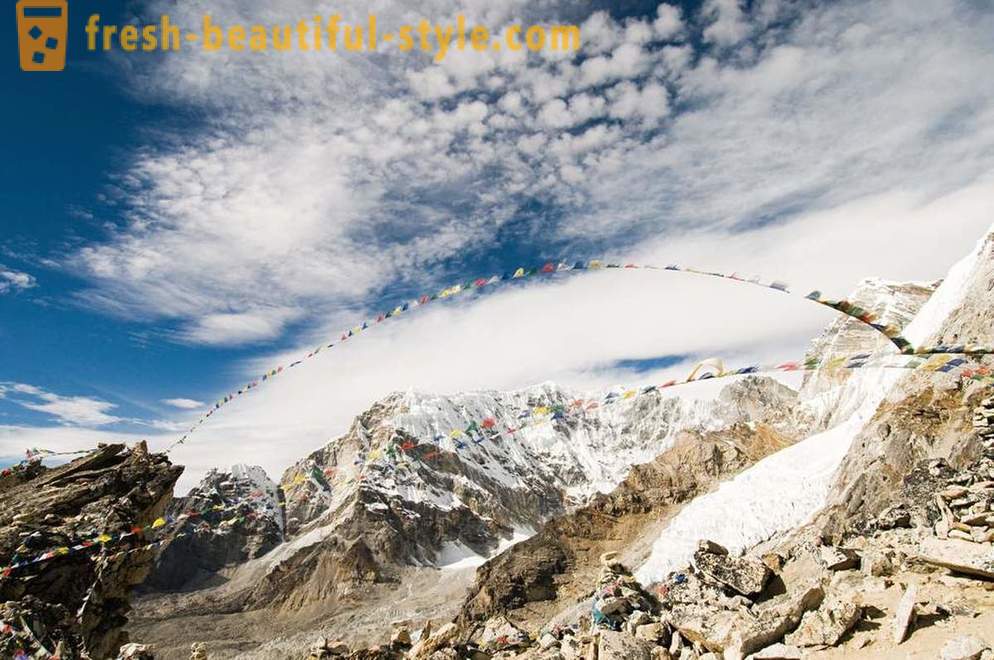
To the tragic death brought a combination of two factors: a little "weather window" and a record number of permits issued for the ascent - 381 permit. As a result, up to the top of more than 700 people (guides and Sherpas accompanying climbers, permission is not required), a waiting list - people had to hold it up to 12 hours. "It's like a cork in the city. All are on the avenues. In recent years, a common practice since the days suitable for climbing, just two to seven per year. The remaining days of raging strong wind or snowing in the monsoon period. Everyone wants to fit into this "weather window", - explains Abrams.
As a rule, all the climbers climb Everest oxygen masks. Since 1978, when the peak reached the Italian Reinhold Messner and Peter Habeler German, without oxygen to the summit we were able to climb a little over 200 people.
"At this altitude, the oxygen partial pressure is about four times less than at the surface, and is 45 millimeters of mercury instead of 150 at sea level. The body receives less oxygen it leads to hypoxia, which is manifested in the weight of the head, drowsiness, nausea and inadequate actions ", - says editor in chief of Internet portal Mountain.RU Anna Piunova.
In 2016 ascent of Everest without oxygen committed American mountaineer and National Geographic photographer Cory Richards, and his friend Adrian Bollinger turned back 248 meters from the top - and most likely, thus saving his life. "I had a few difficult nights before climbing to the summit at an altitude of 7800 and 8300 meters. I did not manage to keep warm - body temperature was too low. When we started to climb further, I realized that I do not feel 100%. Contrary to the weather forecast started light breeze. I started to shiver started, I did not so talkative, then began to shake and lose basic skills ", - said Bollinger.
Not everything ambitious climbers listen to your own body and their accompanying guides, tells Piunova. "Many people do not understand exactly how the body responds to the height, do not realize that ordinary cough can be a symptom of a rapidly developing pulmonary edema and brain. At this altitude, well-being depends on whether the oxygen flow rate includes guide you. " Sherpas are usually not expect to spend so much time in the death zone, 12-hour queue - a kind of record, the customer consumes more oxygen cylinders missing. In such cases, it reduces the Sherpa feeding or giving a bottle, if he sees that the client is very bad. Sometimes customers do not listen to guides, as they say, it's time to begin the descent. Sometimes enough to lose a few hundred meters, to stay alive, "- said Kovalev.
Queues Everest - a common occurrence in recent years
Queues at the summit of Mount Everest - not a new phenomenon. This picture is from the line of people was made at the end of May 2012 experienced a German mountaineer Ralf Duzhmovitsem. Then over the weekend on Mount Everest four people died.
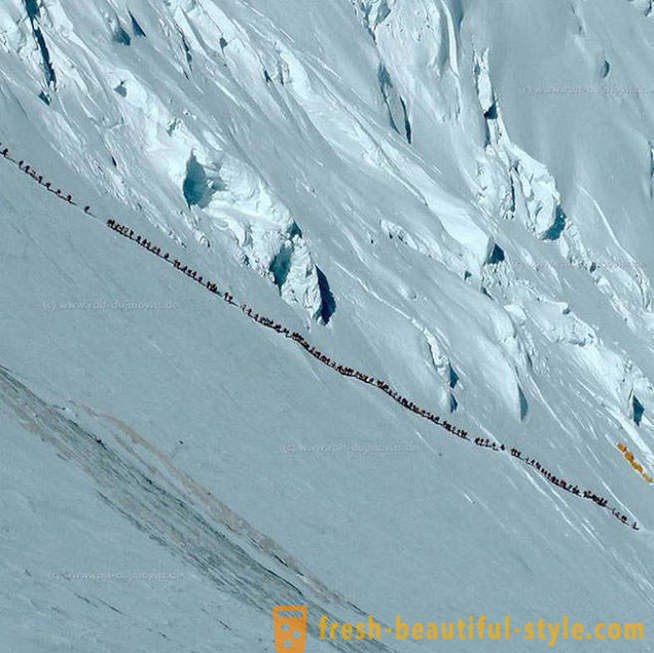
Duzhmovits then could not reach the summit and return to base camp. "I was at an altitude of 7900 and saw the snake of people walking side by side. At the same time it held 39 missions, but only on the top of both ascended more than 600 people. I've never seen so many people on Everest ", - he told The Guardian.
Another important issue in this context - the lack of experience of visitors to see nature, have fun, or, God forbid, to show off to friends. "Who does not need any special skills to climb Everest as do modern tourists. In the last ten years are beginning to use oxygen already at base camp level (it is located at an altitude of about 5300 meters -. Esquire), although before all started using it after the mark of 8000 meters. Now they "drink" it, as if it were water, "- says Duzhmovits.
"Despite the fact that Mount Everest - the highest point of the planet, two classic route, which is now rising - they are quite simple and do not require the ability to climb the vertical cliffs or climbing on vertical ice. Therefore Everest was unexpectedly available for, say, fans with an average level of training "- says Kovalev.
Is it possible to avoid a repetition of such tragedies?
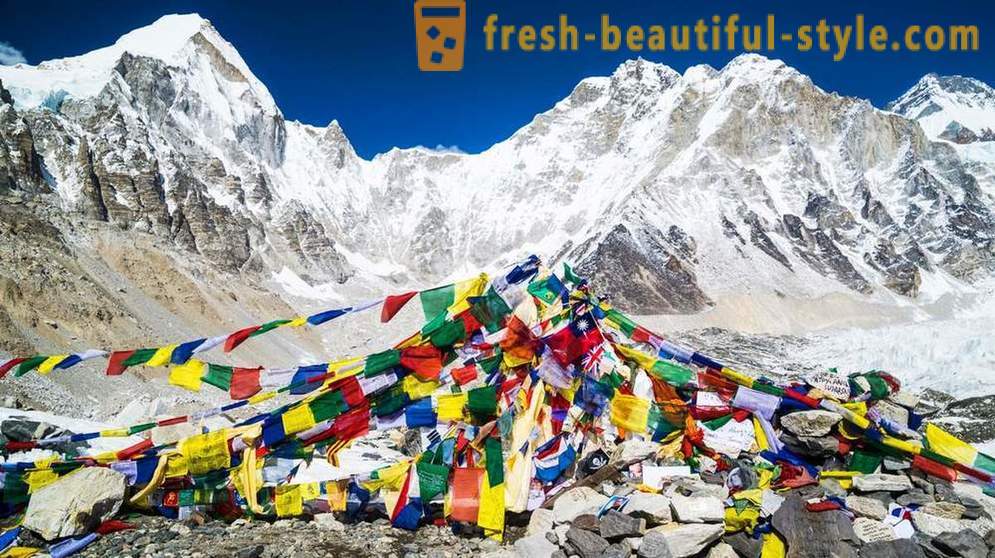
If at the height of Everest was organized a patrol, which monitors the weather and adjusts the amount of ascending humans may have many of the deaths could have been avoided. But in the current environment, the decision is for companies that organize tours.
Experienced climbers say in the capital Kathmandu Nepal opened many small firms, offering expedition at a lower cost, while larger companies have ceased to pay much attention to organizational aspects and safety.
So, one of the climbers (he was on Everest in the tragic date) told The New York Times, that he had diagnosed cardiac pathology, but he lied to the organizers, it is absolutely healthy.
"To participate in the Ironman (Triathlon Series events -. Esquire), you need to pass regulations. At the same time to lift up the highest mountain on the planet regulations are not needed. What's wrong with that? "- asks one of the most experienced climbers.
Members of the expedition also complain of poor equipment - up to the fact that the cylinders with oxygen leak, explode or substandard oxygen filled in the black market.
"For Nepal is a lucrative business. For the Sherpas - the only way to make money. So expect improvements in the near future is not necessary ", - said Alexander Abramov.
According to Anna Piunova nothing wrong with commercial mountaineering is not the main problem - in the amount of expedition groups. "This problem can be solved only Nepal. There are several options: You can greatly increase the price again on the permit, you can enter the lottery, as in the New York marathon, and you can simply limit the number of permits issued. And, you can convey to people is quite a simple idea that the mountains - it's not just Everest. " Outright bans - a measure of excess, said Sergei Kovalev: "Theoretically, the Nepalese authorities may impose restrictions, but then it will create some excitement, will be a big financial loss for the country, and for businessmen who are engaged in this business. The state should regulate this area, but only on the issue of control of the organizers of the expedition - the need to monitor the quality of training guides and competence of the company. "
Why do people continue to climb Mount Everest?
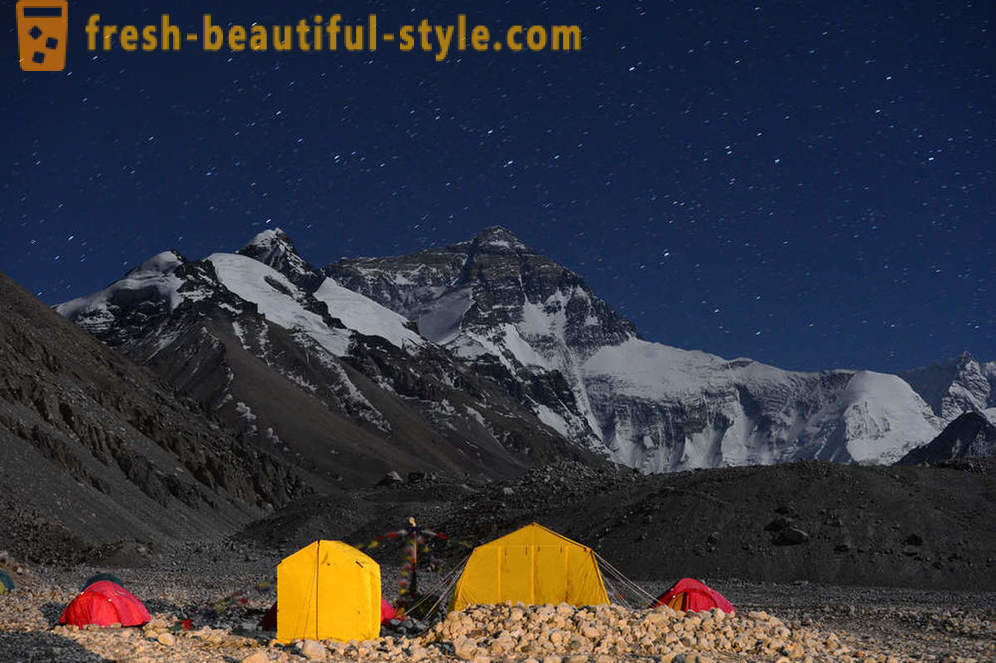
"What we see on Everest these days, the classic mountaineering irrelevant. Everest is called the third pole of the earth, people are willing to pay big bucks to put another check mark on his map of the world. After the film "Everest", is based on the bestselling book Krakauer's "Into Thin Air" about the tragedy of 1996 (May 11, 1996, eight climbers died while climbing Mount Everest -. Esquire), interest in the mountain only grew stronger. We can not say that all these people that are hired Sherpas move only vanity and ambition. All different. Someone just wants to see the world from a different angle. Someone wants to get out of your comfort zone, to test themselves, "- says Anna Piunova.
With her agrees Serey Kovalev: "First of all, Mount Everest climb, because it exists. It is a challenge to myself, at least on the top of already visited thousands of people, it's still a personal achievement. Everest did not become a one meter lower than for those 50 years. Each step towards the top - a victory over himself. For the sake of the people and go to the highest point. Why Everest? It's pure magic numbers, it is the highest peak on the planet. "
Alexander Abramov calls the ascent of Everest the meaning of life: "I have been climbing since I was 17 and did a 500 climbs of varying difficulty and height. Everest I have developed a kind of relationship. The first four were unsuccessful ascent - I do not shore power, was ill prepared (the first trip we did not use the Sherpas and we had a little oxygen), had bad food and cheap equipment. Perhaps that is why I continue to storm it every year. And ten times come to the top. Each time it is difficult and dangerous event, without which I can not see my life. And of course, it's my job - the work of a mountain guide. I love my job and I find in climbing the meaning of my life. "













































